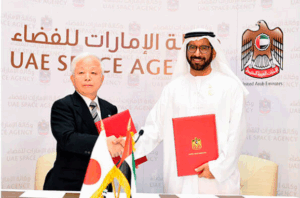This article is a summary of the policy paper “Brazil, South Korea, and Global Value Chains: a Tale of Two Countries” by Otaviano Canuto, published by the Center for Macroeconomics and Development, in partnership with the Korea Foundation and Fundação Getulio Vargas, on August 17, 2020.
South Korea has climbed the income per capita ladder up to high levels, while Brazil may be considered a case of a “middle-income trap”. Such divergence of economic growth performances can be related to their distinctive approaches to global value chains and trade globalization, as well as to domestic accumulation of technological and organizational capabilities.
Facing the middle-income trap: a tale of two countries
The “middle-income trap” has captured many developing countries: they succeeded in evolving from low per capita income levels, but then appeared to stall, losing momentum along the route toward the higher income levels of advanced economies (Canuto, 2019). Such a trap may well characterize the experience of Brazil and most of Latin America since the 1980s. Conversely, South Korea maintained its pace of evolution, reaching a high-income status (Figure 1).

In most cases of successful evolution from low- to middle-income status, the underlying development process is broadly similar. Typically, there is a large pool of unskilled labor that is transferred from subsistence-level occupations to more modern manufacturing or service activities that do not require much upgrading of these workers’ skills, but nonetheless employ higher levels of capital and embedded technology.
The associated technology is available from richer countries and easy to adapt to local circumstances. The gross effect of such a transfer – usually occurring in tandem with urbanization – is a substantial increase in “total factor productivity”, leading to GDP growth that goes beyond what can be explained by the expansion of labor, capital, and other physical factors of production.
Reaping the gains from such “low-hanging fruit” in terms of growth opportunities sooner or later faces limits, after which growth may slow, trapping the economy at middle-income levels. The turning point in this transition occurs either when the pool of transferrable unskilled labor is exhausted, or, in some cases, when the expansion of labor-absorbing modern activities peaks before the pool is empty.
Beyond this point, raising total factor productivity and maintaining rapid GDP growth depends on an economy’s ability to move up on manufacturing, service, or agriculture value chains, toward activities requiring technological sophistication, high-quality human capital, and intangible assets such as design and organizational capabilities. Furthermore, an institutional setting supportive of innovation and complex chains of market transactions is essential.
Instead of mastering existing standardized technologies, the challenge becomes the creation of domestic capabilities and institutions, which cannot be simply bought or copied from abroad. Provision of education and appropriate infrastructure is a minimum condition.
Brazil saw the transfer of labor from subsistence-level employment slow well before they had exhausted their labor surpluses, as macroeconomic mismanagement and an inward-looking orientation established early limits to that labor-transfer process. Nevertheless, some enclaves have been established in high positions on global value chains (for example, Brazil’s technology-intensive agriculture, sophisticated deep-sea oil-drilling capabilities, and aircraft industry).
By contrast, South Korea relied extensively on international trade to accelerate their labor transfer by inserting themselves into the labor-intensive segments of global value chains, before climbing the ladder of value and technology intensity within value chains. This was facilitated by those advances in information and communication technologies, and by decreasing transport costs and lower international trade barriers that allowed the full-fledged development of “global value chains” (Canuto, 2017).
The path from low to middle income per capita, and then to high-income status, corresponds to the increase in the share of the population that has moved from subsistence activities to simple modern tasks, and then to sophisticated ones. International trade has opened that path, but institutional change, high-quality education, and local creation of intangible assets are also essential for sustaining progress over the long run. South Korea is a prime example of a country that exploited these opportunities to move all the way up the income ladder. Countries trapped at middle-income levels have typically failed in undergoing appropriate changes in institutions, education, and local accumulation of intangible assets.
Table 1 contains the results of the latest wealth measurement effort made by the World Bank for Brazil and South Korea. It depicts what lies behind the contrasting evolution of GDP per capita of the two countries (Figure 1). As expected, the relative natural-resource richness of Brazil appears in the value of natural capital. Produced capital (physical capital, i.e. machines and equipment, infrastructure etc.) reflects the differences in investment ratios of GDP between the countries over the years. The differential is glaring in the case of human capital, reflecting South Korea’s investments in comprehensive education of its population and success in the local development and accumulation of intangible assets (technological and organizational capabilities).

It is worth highlighting four aspects of the comparative evolution of Brazil and South Korea toward what Table 1 exhibits. First, manufacturing structures in both countries evolved in tandem with the extent of local accumulation of intangible assets, with productivity and levels of upgrade in value chains reflecting such accumulation. While both countries went through similar trajectories of heavy industrialization up to the 1980s, South Korea’s successful entry into higher-tech mechanical-electronic areas afterwards reflected a local intangible asset accumulation, as part of a co-evolutionary process, rather than being the consequence of any “forced”, protected installation of activities. Capabilities explain sectors, not contrariwise.
Natural-resource-rich middle-income countries face a road of their own, one made wider by the upward phase of the super-cycle of commodities prices that accompanied the shifts in composition of global GDP in the new millennium. Unlike manufacturing, natural-resource use is to a large extent idiosyncratic, which creates scope for local creation of capabilities in sophisticated upstream activities, with the corresponding challenge to do so in a sustainable fashion (Vostroknutova, E., Brahmbhatt, M., and Canuto, O., 2010).
Second, the structure of incentives – rewards for success, punishment for failure – matters for local investment in intangible assets, as they shape the risk-weighted benefit-cost calculus made by economic agents. In this regard, an important distinction between public policies in South Korea and Brazil could already be pointed out before the 1980s (Neves, 2020). Chaebols were the outcome of an evolutionary (“Schumpeterian”) process during which success in mastering technology and productivity – including contractual targets of world market share occupancy – was rewarded with additional permits and subsidized finance, whereas losers were left behind (Amsden, 1989) (Canuto, 1993). Under such market-emulating rules of “helping winners and punishing losers”, industrial policy beneficiaries did not think twice before using surpluses to invest in technological capability construction.
Now compare that with the “helping winners and saving losers” of Brazil’s industrial policies and finance. Under such circumstances, the temptation to use surpluses to accumulate wealth in ways to maximize frontiers of interaction with the public sector prevails against spending them with technology and productivity mastering. Brazil’s long-standing high levels of trade protection and closure also favored such an option (Canuto, Fleischhaker, and Schellekens, 2015a).
Third, Brazil has remained an upper-middle income country for long because of the co-existence of islands of high-income activities and a remaining large pool of low-productivity, low-education occupancy of the population. That constitutes a still-untapped source for increases in total factor productivity via occupational change.
Fourth, South Korea’s local accumulation of intangible assets benefited from technology spillovers of globalization through trade, whereas the global fragmentation of production processes along cross-border value chains has largely bypassed Brazil (Canuto, Fleischhaker, and Schellekens, 2015b). Nevertheless, South Korea’s local attributes to escalate the ladder of innovation capabilities were highly relevant to explain its appropriation of globalization’s technological spillovers. Different business environments have also made a difference between Brazil and South Korea (Canuto, 2020a).
Challenges ahead
Current technological developments in manufacturing are likely to lead to a partial reversal of the wave of fragmentation and global value chains that was at the core of the rise of North-South trade from 1990 onwards (Canuto, 2017, 2018c). Such a trend, together with protectionism, tends to be exacerbated by the coronavirus crisis (Canuto, 2020b). At the same time, China – the main hub of the global-growth-cum-structural-change of that period – may attempt to extend the previous wave through its “One Belt, One Road” initiative. The major challenge faced by South Korea will be to overcome what Lee et al (2019) have called a “middle innovation trap”, while navigating in a global environment of trade and technology wars.
Challenges to achieve simultaneously employment of unskilled workers and substantial increases of productivity are becoming taller. Furthermore, those horizontal productivity and competitiveness factors – including local accumulation of capabilities, low transaction costs, infrastructure improvement, etc. – that were crucial for a broad and deep manufacturing-led development are now extended to services. There is more complementarity than substitutability between productivity and competitiveness factors supporting manufacturing and services. There is no alternative but to raise the bar domestically if a developing country wants to enjoy any of these as engines of growth.
As for Brazil, following the protectionist mood triggered by recent trade wars and the coronavirus crisis – Canuto (2020b) – wouldn’t it be more convenient to have a closed economy in the current global context of trade wars? It should be emphasized that the burden of lost productivity and quality falls on the Brazilian economy itself. In addition to direct import and export channels, trade closure contributes to the low intensity of competition in many domestic markets, which in turn helps to explain why the survival of less efficient firms is proportionally larger in Brazil than again in comparable economies.
In most sectors, Brazil presents high degrees of heterogeneity in the productivity of companies, with the survival of less efficient companies higher than in many other countries. Goods and services available in the country are more expensive and of lower quality than they could be, as avenues for innovation and productivity increases remain narrow. The average productivity is lower than what would prevail if market slices and resources could be absorbed by the most efficient companies. Brazilian commercial closure thus has a deleterious effect by reducing the strength of competition between firms and hence allowing capital and human resources to remain in inefficient firms. Average productivity would be greater if they were reallocated to better companies.
It is worth emphasizing the key role of Brazilian domestic reforms in order to improve the broad set of complementarities to knowledge and technology from abroad, as it happened in South Korea. Brazil’s lack of competition and poor productivity performance have domestic reasons that go beyond external trade closure: low investment in infrastructure; unfriendly business environment; distortions in long-term financing; quality of public spending on education; etc. Changes in these areas would be a precondition for benefits of greater trade integration to be fully realized – but these improvements are already necessary by themselves (Canuto, 2020c). Instead of corporate supportive policies to compensate for competitive disadvantages resulting from the burden of those aspects and other goals, it would be necessary to adopt policies aimed at raising productivity and smoothing worker relocation processes.
Picture credits: Center for Macroeconomics & Development







Be First to Comment